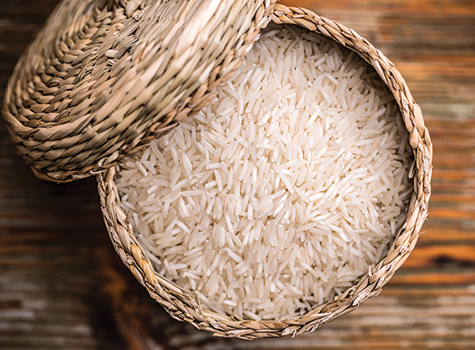
Recently, we experienced a huge shortage of rice. India put a ban on exporting non-basmati rice in mid-July, which led to panic buying, hoarding, and price gouging across the USA. People stood in lines and attacked grocery stores to get their hands on even one bag of rice.
There were many interesting discussions that resulted from this. One of the conversations that caught my attention was whether rice was worth all this trouble. People were questioning the health benefits of rice, and whether we should be even eating it in the first place! Aren’t we supposed to avoid carbs? Isn’t white rice the worst for diabetics? Shouldn’t we take this as an opportunity to give up rice? All these discussions started popping up, which led me to write about this topic.
Coincidentally, September is National Rice Month! Rice is the most widely consumed crop by more than half of the world’s population. There are two distinct species of cultivated rice. Asian rice (Oryza sativa) and African Rice (Oryza glaberrima). Most of the rice produced today is Asian rice. There has been a lot of debate and research about whether the cultivation of rice originated in China or India. There is consensus that rice has been cultivated for more than 8000 years.
There are more than 40,000 varieties of rice, and it is a staple ingredient in more than 100 countries!
Rice varieties are classified as short, medium, or long grain, depending on the length and width of the rice when cooked. The main difference between these sizes is the starch content.
Long-grain rice has a firm, dry texture, and stays separate after cooking. Basmati and Jasmine rice are common varieties of long-grain rice.
Medium-grain rice has a tender, moist texture, and grains stick to each other when cooked. Valencia rice is a common variety of medium-grain rice.
Short-grain rice has a tender, soft texture, and it is stickier than medium-grain rice. Arborio and sushi rice (short grain rice originated from Japan) are common varieties of short-grain rice.
Nutritional benefits of rice
All varieties of rice first grow in the paddy fields as brown rice. Each whole grain of brown rice has three parts – the bran, the germ, and the endosperm.
Brown rice contains important nutrients such as ï¬ber, potassium, magnesium, manganese, phosphorus, selenium, and vitamins B1, B3 and B6.
White rice is the middle endosperm after the germ and bran has been removed. White rice is mostly starch.
Rice is one of the easiest to digest grains. Rice is naturally gluten-free and can be eaten safely from babies to elderly people without causing gas, bloating, or digestive issues. While brown rice may have more nutrients, white rice can also be part of a healthy diet.
Rice is a rich source of carbohydrates. We need carbohydrates as they are our main source of energy.
There are other varieties of rice such as black rice, red rice, and wild rice. Wild rice is technically not rice but a type of grass. The darker colored rice varieties are richer in antioxidants.
There are many whole grains that can be consumed such as whole grain wheat, and other gluten-free grains such as quinoa, millet/bajra, sorghum (jowar) etc. However, that does not mean that we should give up on rice completely.
No matter which grains you choose to eat, you must be mindful of amount and portion sizes. If eaten in moderation as part of a balanced plate, rice can be consumed whether you have diabetes or you want to lose weight.
Rice has been such as integral part of our cultural diet, that avoiding it may cause you to feel deprived. Food is our fuel and should never make us feel guilty or deprived.
There is nothing more comforting than having a serving of piping hot daal rice to satisfy the body and mind at the end of a busy day.
To summarize, rice is a staple food in many countries around the world and has been so for thousands of years. It is an important and nutritious grain that feeds more than half of the world’s population. Rice should be included as part of a balanced diet. Well, except when there is a shortage. Go ahead and try other grains as well, but do not villainize rice.
Parul Kharod is a registered dietitian and licensed nutritionist and works as a Clinical Dietitian. She can be reached at parulkharod@gmail.com



